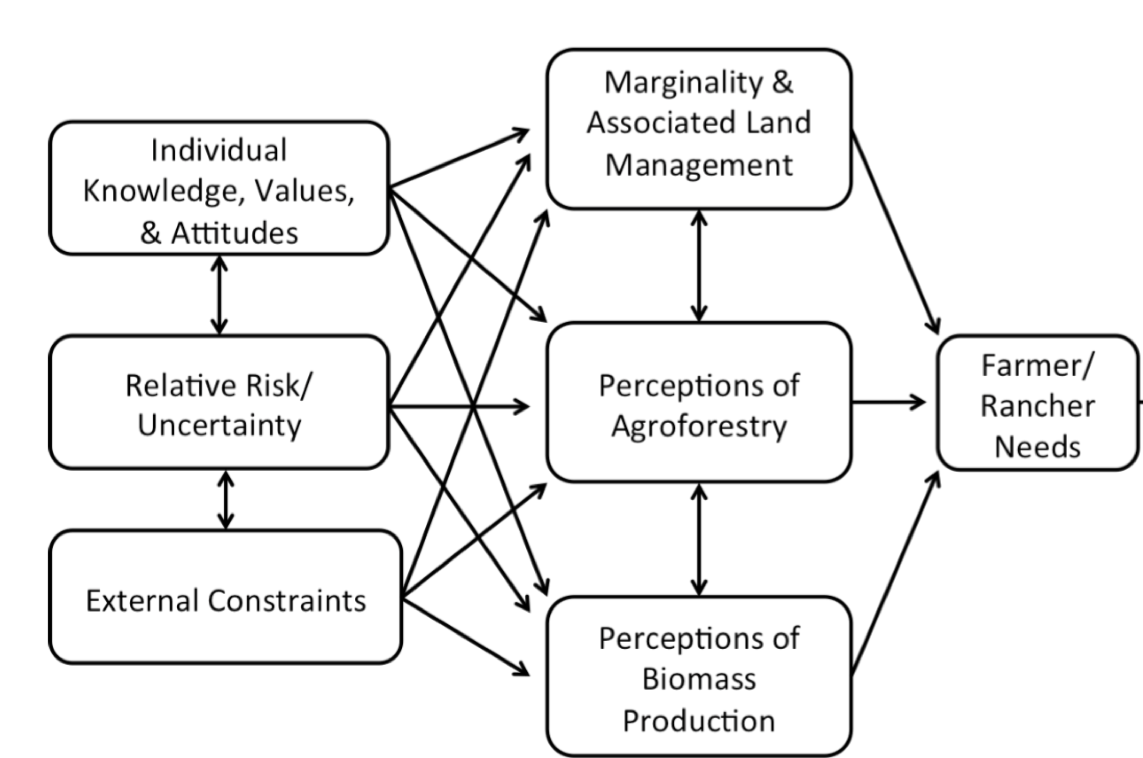Bioenergy produced from perennial feedstocks such as woody biomass could serve as an opportunity to strengthen local and regional economies and also jointly produce various environmental services. In order to assess the potential for biomass- based bioenergy, it’s essential to characterize the interest that potential biomass suppliers have in such an endeavor. In the U.S. Great Plains region, this largely means assessing relevant perceptions of farmers and ranchers. We conducted a series of farmer and rancher oriented focus groups in North Dakota, South Dakota, Nebraska and Kansas to qualitatively explore opinions about the role that trees can play in agriculture and interest in woody biomass systems within existing Northern Great Plains (NGP) farms and ranches. Our findings suggest that farmer and ranchers generally value the role that trees, or tree-based practices like windbreaks can play in agriculture particularly on marginal farmland in terms of conservation or crop protection. Yet relative to the potential of trees as a biomass crop there is a distinct lack of knowledge and skepticism. Farmers and ranchers also noted variable degrees of risk concern and uncertainty regarding investing in tree-based systems, as well as a number of perceived external market related constraints to integrating trees within their managed systems. Most of the participants recognized that if biomass production or an increase in tree planting and management in general were to expand in the NGP region, government programs would likely be required to provide much needed technical guidance and financial incentives. As the NGP regional bioeconomy continues to emerge and expand, private and public investment relative to niche bioenergy feedstocks such as woody biomass should address the type of information needs that farmers and ranchers have relative to integrating biomass production into existing farm and ranch systems.

